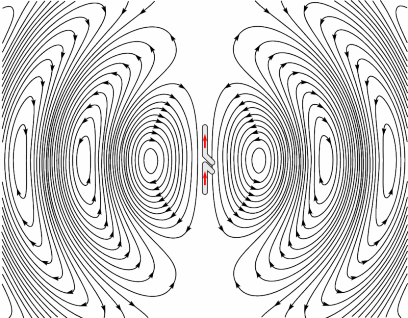How can reflection and refraction be explained classically and microscopically?
Although you stated you are not interested in Huygens' principle, I want to add a note on this explanation. I will need in my answer the expression for the electric field of a radiating dipole
$$\boldsymbol{\rm E}\left(\boldsymbol{r},t\right)=-\frac{\omega^{2}\mu_{0}p_{0}}{4\pi}\sin\theta\frac{e^{i\omega\left(\frac{r}{c}-t\right)}}{r}\hat{\theta}$$
This expression assumes the dipole oscillates in the $\hat{z}$ direction. Now look for example at this picture

taken from here. This illustration seems to discard the polarization of the incoming wave (as you said), but if you think about it more - it turns out it doesn't. The radiation in the plane of incident is circular only for $s$-polarized light, since then each dipole is oscillating in the $z$ direction (in and out the page) and radiating a field given by
$$\boldsymbol{\rm E}\left(r,\theta=\frac{\pi}{2},\varphi,t\right)=-\frac{\omega^{2}\mu_{0}p_{0}}{4\pi}\frac{e^{i\omega\left(\frac{r}{c}-t\right)}}{r}\hat{z}$$
independent of $\varphi$ and $s$-polarized too. If, on the other hand, you want to treat $p$-polarized light, then each lattice point should radiate like in this image

taken from here, and it will definitely have other consequences from the $s$-polarized dipoles. A popular example is the existence of the Brewster's angle, which is the result of the dipole not radiating on its oscillations axis. Also, as before, you can see that the polarization of the far field radiation is parallel to the direction of the oscillations of the dipole. This means that the $p$-polarization is maintained.
It seems that what you are really asking for is answered by the Ewald-Oseen extinction theorem.
https://en.wikipedia.org/wiki/Ewald%E2%80%93Oseen_extinction_theorem
The canonical derivation is in Born and Wolf.